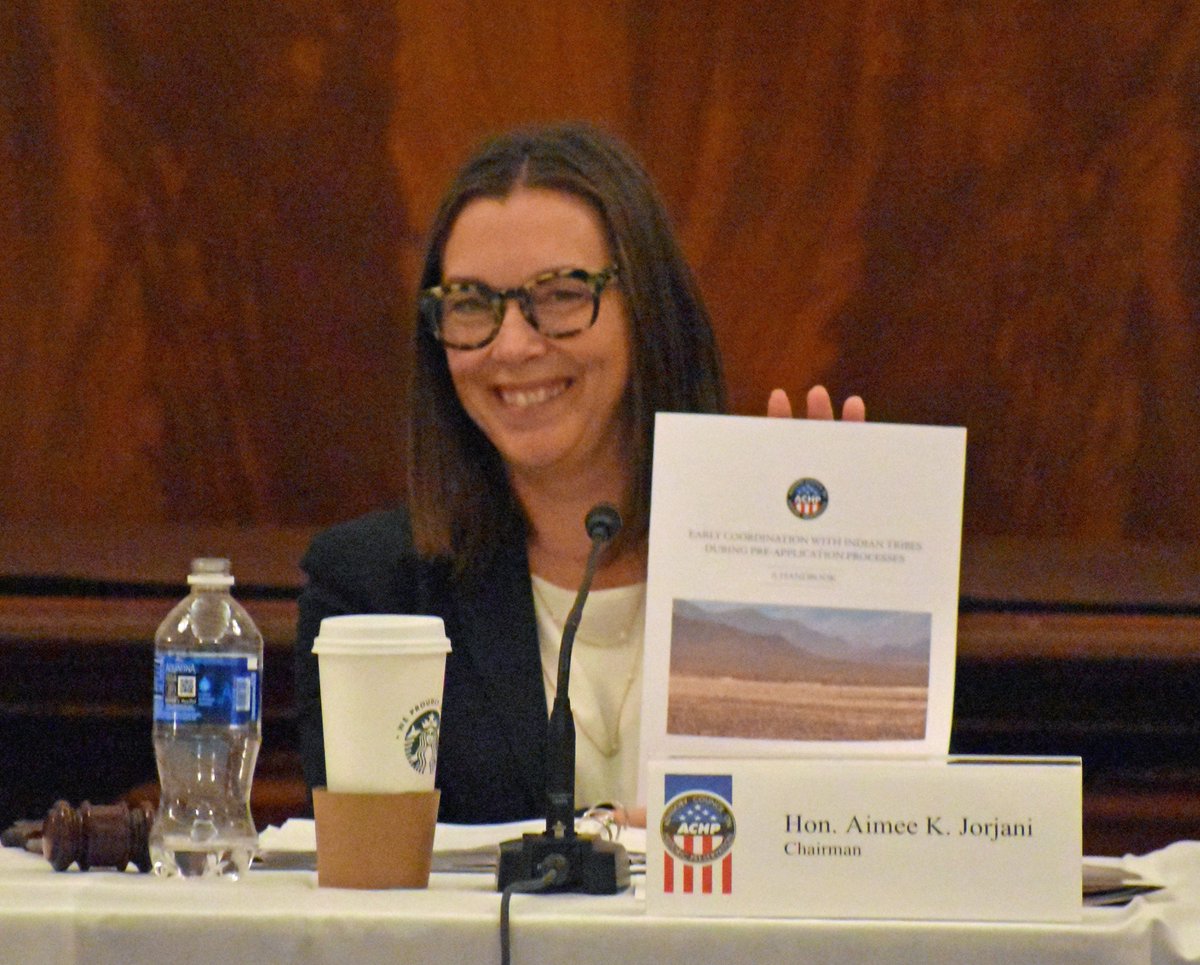Handbook on Indian tribes now available
 Chairman Jorjani announced the new Early Coordination with #IndianTribes Handbook to offer guidance on how federal agencies, industry, and Indian tribes can work collaboratively and effectively through the #Section106 process go.usa.gov/xpjed%5B/caption%5D
Chairman Jorjani announced the new Early Coordination with #IndianTribes Handbook to offer guidance on how federal agencies, industry, and Indian tribes can work collaboratively and effectively through the #Section106 process go.usa.gov/xpjed%5B/caption%5D
WASHINGTON— As the Advisory Council on Historic Preservation (ACHP) commemorates National Native American Heritage Month, Chairman Aimee Jorjani announced the release of Early Coordination with Indian Tribes during Pre-application Process: A Handbook, to offer guidance on how federal agencies, industry, and Indian tribes can work collaboratively and effectively prior to the submission of applications that will need to go through the Section 106 process of the National Historic Preservation Act (NHPA).
“The ACHP wants to see the best outcomes for Section 106 cases. Involving Indian tribes early on in the Section 106 process provides all parties with the greatest opportunity to have their voices heard and incorporated into an undertaking’s plans,” Chairman Jorjani said. “The guidance provided through the handbook and the companion eLearning course can assist federal agencies, industry, and Indian tribes in creating a more collaborative environment and ultimately expediting projects.”
The document, posted on the ACHP website, provides background information on the Section 106 process for applicant-driven projects and then offers suggestions, using examples of best practices from an Indian tribe, an energy company, and a state transportation agency.
Concurrent with the development of the handbook, an online on-demand eLearning course, Early Coordination with Indian Tribes for Infrastructure Projects was launched in July 2019. The course can be found at www.achp.gov/training/elearning.
Section 106 of the NHPA is invoked whenever a federal undertaking poses the potential to effect a property listed on, or eligible for listing on, the National Register of Historic Places maintained by the National Park Service. Under the NHPA, if the potential for adverse effects exists, federal agencies must consider how to avoid, minimize, or mitigate the impact on historic properties in consultation with key parties, including Indian tribes.Federally recognized Indian tribes—including Alaska Native Villages, Regional Corporations, or Village Corporations—have a right to participate in the Section 106 process in a manner that recognizes their expertise in the identification and evaluation of historic properties of religious and cultural significance to them. The process is often more effective if historic preservation in general and tribal involvement in particular are included early in project planning, even before federal agencies initiate the Section 106 review process.
The handbook and course support the Administration’s directive to complete environmental reviews within two years and stresses that better coordination early on makes the review process smoother in an effort to ensure historic preservation is considered during the pre-application process.
